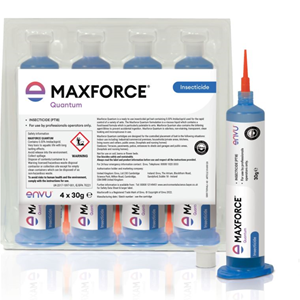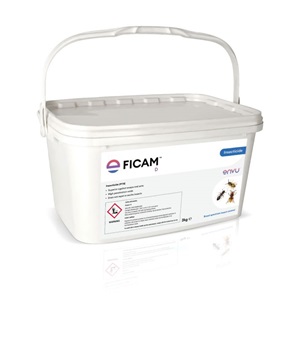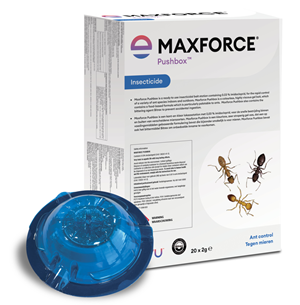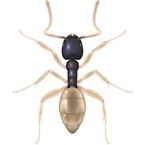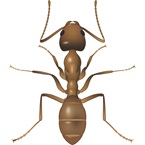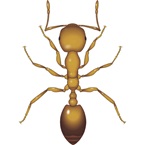Latin name:
Lasius niger
Characteristics:
Elbowed antennae; biting mouthparts; if present, two pairs of membranous wings, fore and hindwings hooked together; abdomen constricted at base giving appearance of a waist which bears characteristic nodes or scales; metamorphosis complete, with egg, larval, pupal and adult stages; possess complex social system.
Species characteristics:
- Workers 3.4-5mm long, queens 15mm long;
- Colour: workers dark brown-black, queens mid-brown;
- Waist of only one segment
Areas where found:
In Britain comparatively few indigenous species, which nest outdoors, are likely to enter houses regularly. One such species is the Common Black Ant (Lasius niger).
An active insect, it nests outside in grass and walls and under paving. It will forage widely in search of food, which is how it comes to enter domestic premises.
Foraging worker ants cause a nuisance as they travel widely in search of food, following well defined trails and clustering around the food source. Sweet foods are preferred. In gardens their excavations around plant roots make the soil excessively dry.They will also cultivate greenfly, themselves pests,in order to obtain the sugary honeydew secretions that these aphids produce. On the other hand they can be beneficial as predators of other insects and general scavengers. They are obviously an unpleasant sight and may damage food used for human consumption.
Lifecycle:
The gregarious habits of ants have resulted in the development of a caste system, whereby individuals are responsible for specialised duties
within the community. There are: workers (sterile females); fertile males; and queens (fertile females). The worker ants build and extend the nest, look after larval forms and forage for food, whereby they become pests. The queens perform none of these duties, but remain almost exclusively within the nest. Mating amongst sexual individuals takes place on the wing. These spectacular swarms involve large numbers of ants. The actual swarms only persist for 2-3 hours. After mating the males perish but the females shed their wings and dig a cell in the soil where they overwinter. The eggs are laid in late spring and the white legless larvae hatch 3-4 weeks later. The larvae are fed on secretions from the queen’s salivary glands until fully grown, when they will pupate, forming the well-known "ant eggs". From these pupae emerge the first brood of worker ants. These workers take over foraging duties and tend subsequent broods. The sexual forms are not produced until later. The entire cycle takes about 2 months to complete. Under favourable conditions a nest may persist for several years.
Control:
a) Hygiene/management
Although frequently inaccessible and difficult to destroy, ants’ nests must be eradicated if infestations are to be successfully controlled. The nests of black ants can be located by following their trails. Potential food sources should be identified and protected from attack.
b) Insecticidal control
Insecticide treatments (see recommended products) can be applied in and around the nests and should aim to ensure that a residual film of insecticide is maintained at strategic points, for example points of entry to buildings, such as doors, windows, ventilators, ducts and drains. Wall/floor junctions, ant runs and all other
harbourages should be treated, using the product according to the label directions. Particular attention should be given to small insignificant cracks which may be major points of entry for the ants. Insecticidal baits, too, can be used around the entry points.

